Japanese "Bill"
The history of Japanese bills!
The first coin in Japan is considered to be the "Wadokaichin"(和同開珎) made of silver in 708. Wadokaichin coins made of copper also circulated later. However, there is also a theory that a state-issued currency made of copper called "Fuhonsen" (富本銭) was in circulation from 683.
Fuhonsen is mentioned in books of Edo period and was discovered at the Heijo-kyo site in 1969 and at the Fujiwara-kyo site in 1991. For a long time, there were doubts as to whether the currency was actually used, but in 1999, 33 pieces were discovered together with molds and other items at the Asuka-kyo site. It is now widely believed that this is the oldest currency in Japan.
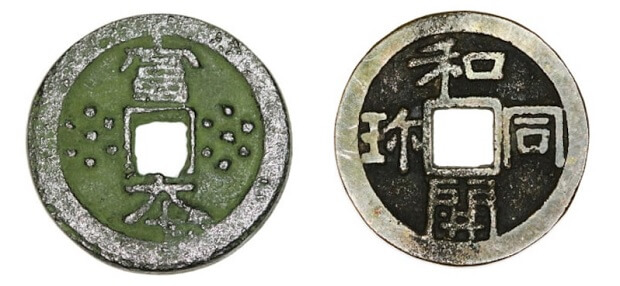
Coins were used from the birth of the first currency, but as the population grew rapidly during the Edo period (1603-1867), there became a shortage of metal to make coins. This is when attention turned to paper money that was circulating overseas. Japan's first paper currency was the Yamada Hagaki, which was used by merchants in Mie Prefecture. This was around 1600, just as Tokugawa Ieyasu started the Edo shogunate.
Later, around 1661, the Fukui domain issued "Hansatsu," which could be used only within the territory. It is said that this spread to many domains in Japan that were suffering from financial difficulties, and 244 domains issued Hansatsu.
In 1868, at the dawn of the Meiji Era, the "Dajokansatsu" was issued, a government bill that was accepted throughout Japan. However, this bill could be easily counterfeited, which caused great confusion in the Japanese economy. Therefore, the Japanese government asked Germany and the U.S., which were the world's leading technological powers in printing technology, to issue the bills.
In 1881, the first bank bill with portraits appeared as an alternative to the new ban bill. This marked the beginning of the history of Japanese bank bill with portraits. The person featured in the portrait was "Jingu Kogo," or Empress Jingu. The bank bill is characterized by the portrait's Western-style face, which was created by an Italian engraver named Edoardo Chiossone. In 1885, the Bank of Japan issued the first "Bank of Japan convertible bank bill". Since it depicted Daikokuten, one of the Seven Gods of Good Fortune, it was widely known as a "Daikokusatsu".
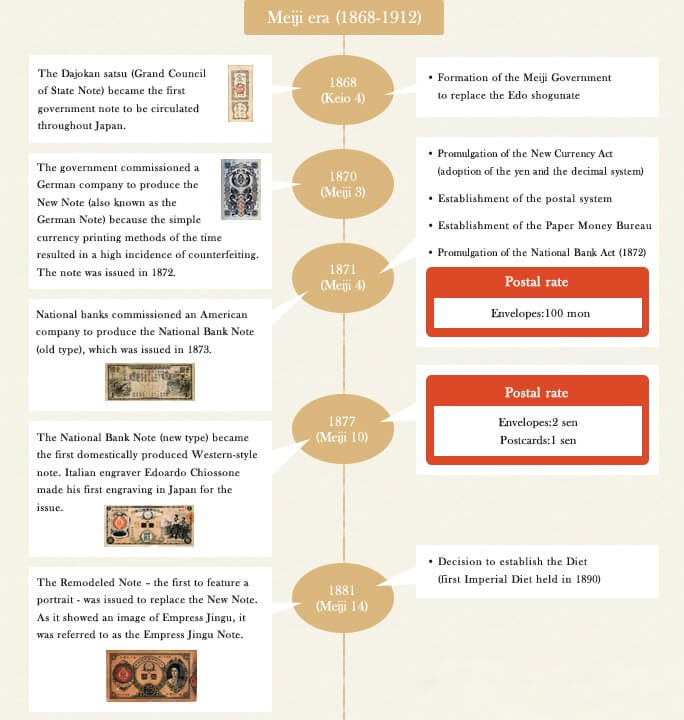
Counterfeit bills invariably appeared on these bills. In Japan, counterfeiting, alteration, or use of currency is punishable by "imprisonment for life or three years or more" under the Penal Code. Along with severe penalties, Japan has improved printing technology to provide a currency that is difficult to counterfeit. The ratio of counterfeit bills is now extremely low in Japan, and Japanese bank bills are known as one of the most difficult currencies in the world to counterfeit, along with the Swiss franc.
One example of this effort is the selection of the person to appear on the bill. Until 2024, the portrait of Hideyo Noguchi on the 1,000-yen bill had to have wrinkles and beards, in addition to being a world-renowned scholar. If wrinkles and beards are finely printed, they are crushed when copied, for example, to prevent counterfeiting.
Of the 18 people who have appeared on bankbills since the Meiji era, seven have no beards: Empress Jingu, Yamato Takeru, Ninomiya Sontoku, Iwakura Tomomi, Fukuzawa Yukichi, Murasaki Shikibu, and Higuchi Ichiyo, while 11 were chosen to have beards.
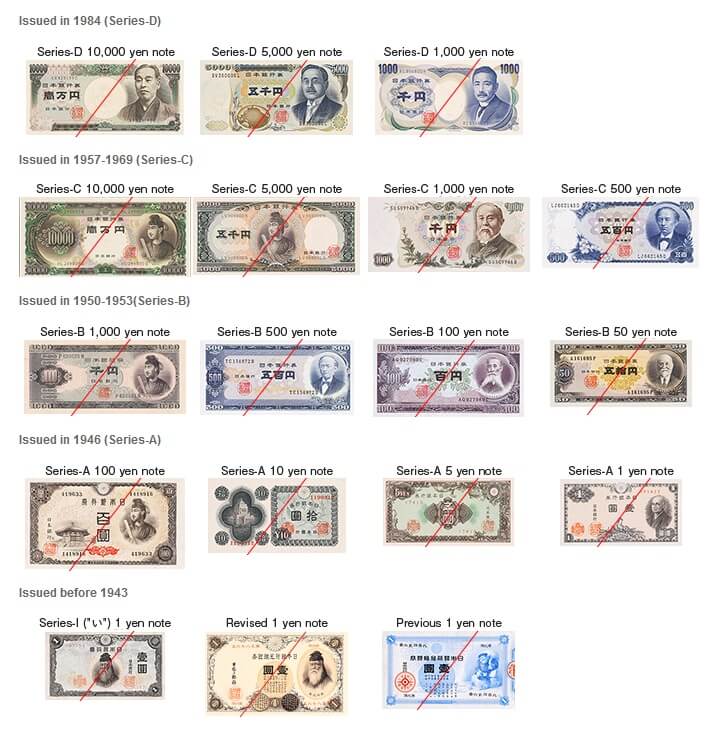
In terms of women, since Empress Jingu on the first 10-yen bill, only Murasaki Shikibu on the 2,000-yen bill and Higuchi Ichiyo used on the 5,000-yen bill have been chosen. Women used to be avoided because it was difficult to put wrinkles on their faces, but with the development of anti-counterfeiting technology, it is no longer necessary to put excessive wrinkles on their faces, so they were chosen.
Another reason for the low number of counterfeit bills is the advanced technology of counterfeit bill detection machines. Matsumura Engineering, a company headquartered in Taito-ku, Tokyo, manufactures the world's best counterfeit bill detection machines. The company became famous for detecting the "Super K" U.S. $100 bill, and has since discovered Super M, Super X, and other counterfeit bills one after another. On October 16, 2004, Newsweek selected inventor Yoshihide Matsumura as one of the "100 Japanese People the World Respects".
Three types of bills will be changed by the first half of July 2024: 10,000 yen, 5,000 yen, and 1,000 yen. The new bills are the crystallization of anti-counterfeiting technology developed over more than 150 years. These are the first in the world to be printed with 3D holograms, which make the portraits appear three-dimensional when they are tilted. They also incorporates many of the latest technologies, including the introduction of a new high-definition suki-inlay pattern.
On the face of the 10,000 yen bill is Eiichi Shibusawa, an active businessman who was involved in the establishment of some 500 companies during his lifetime, including the First National Bank, the Tokyo Chamber of Commerce and industry, and the Tokyo Stock Exchange. He is also known for his philosophy of "Moral and Economic Unity" written in his book. The reverse side depicts Tokyo Station, a historical building and important cultural asset, popularly known as the red brick station building.
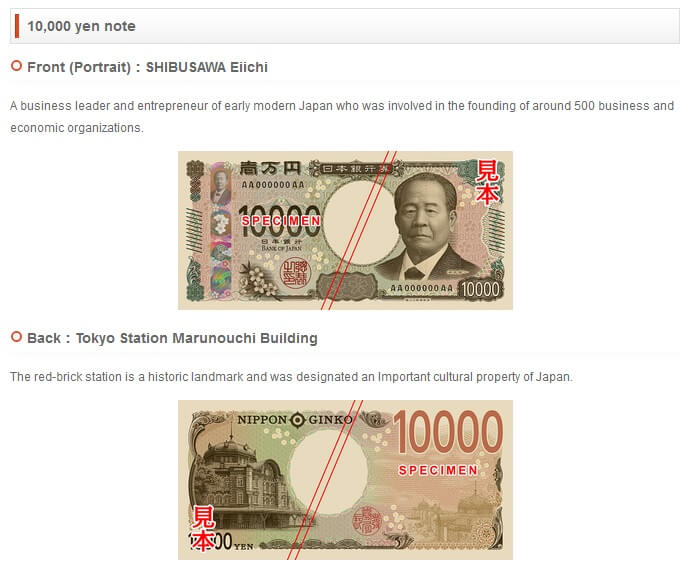
On the face of the 5,000-yen bill is Umeko Tsuda, who devoted herself to modern higher education for women by founding the Joshi Eigaku Juku (now Tsuda Unicersity). She majored in biology at Bryn Mawr College, where she wrote an article that was published in a British academic journal, and is said to be "the first Japanese woman whose article was published in a Western academic journal. Throughout her life, she devoted herself to the advancement of women's status and women's higher education. On the reverse side depicts Fuji(Japanese wisteria), a flower that appears in the Kojiki and Manyoshu and has been familiar to people since ancient times.
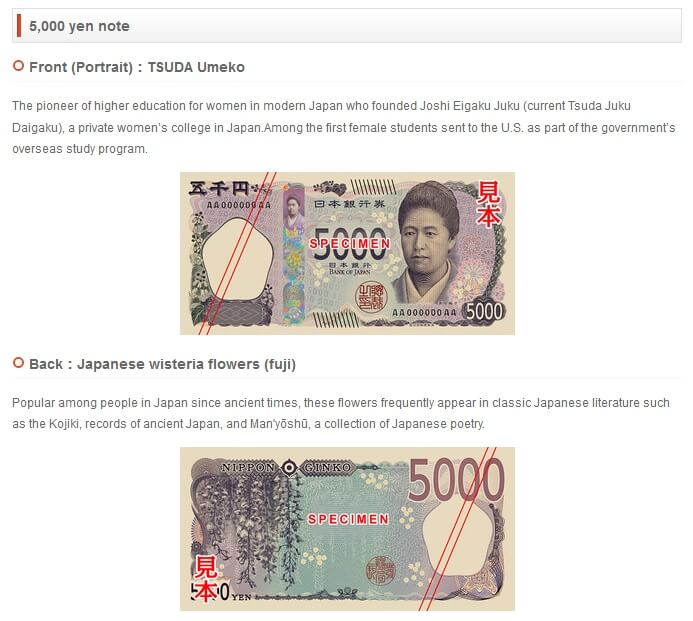
On the face of the 1,000-yen bill is Kitasato Shibasaburo, who established tetanus serotherapy, discovered the plague bacillus, and founded the Research Institute of Infectious Diseases. He was also active in social activities and the training of future generations, including the founding of the Keio University School of Medicine and medical organizations such as the Japan Medical Association. The reverse side depicts "Fugaku Sanjurokkei (Thirty-six views of Mt. Fuji)," a well-known masterpiece by the Edo period ukiyoe artist Katsushika Hokusai, which influenced artists around the world.
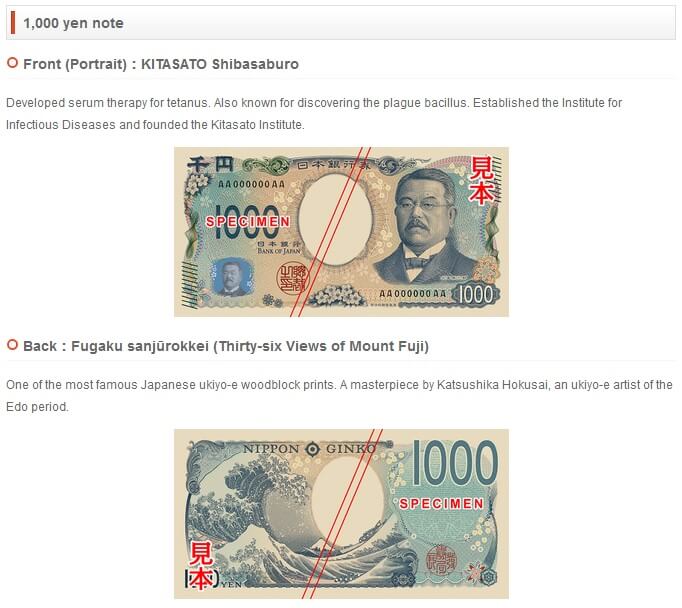
When you travel to Japan, it may be a good experience to see and use cash at least once instead of shopping with credit cards.
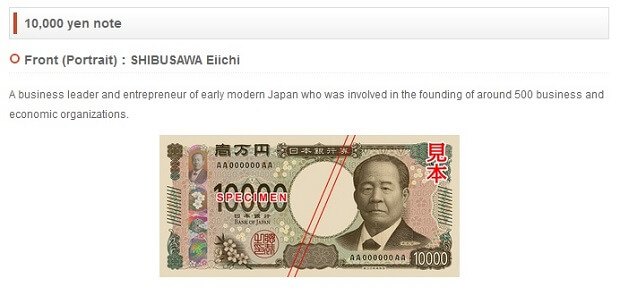
 Opening Lake
Opening Lake April Fool's day
April Fool's day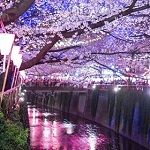 Hanami
Hanami Baseball
Baseball